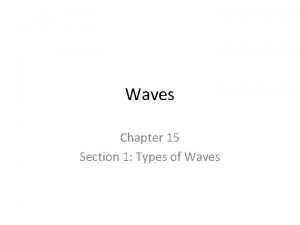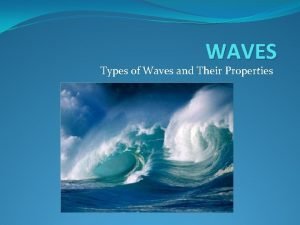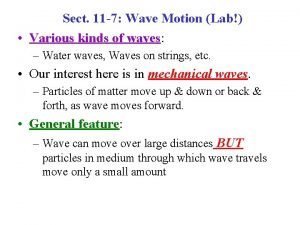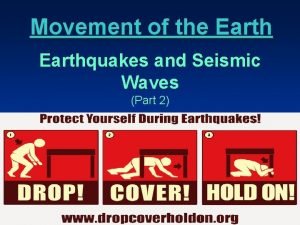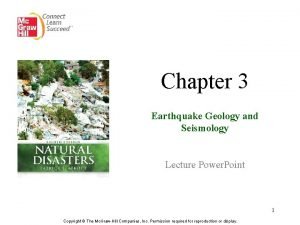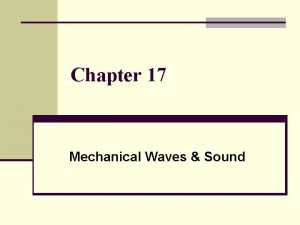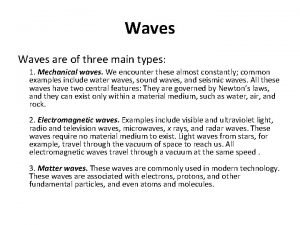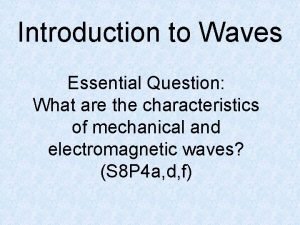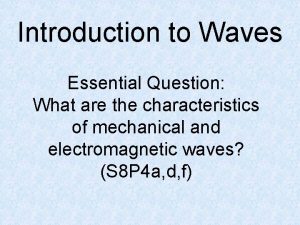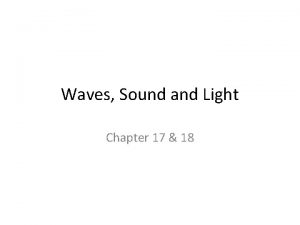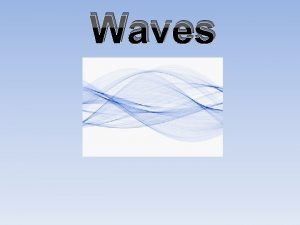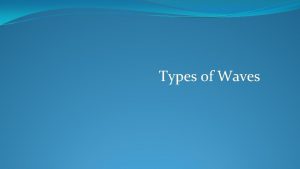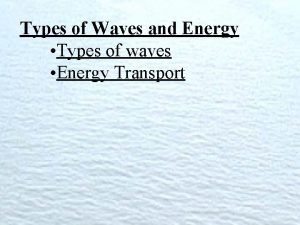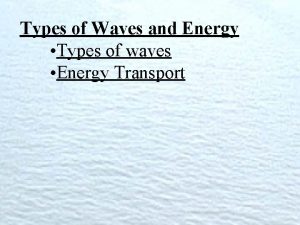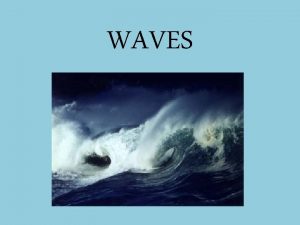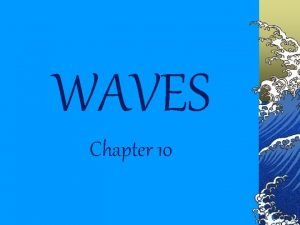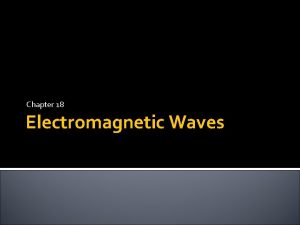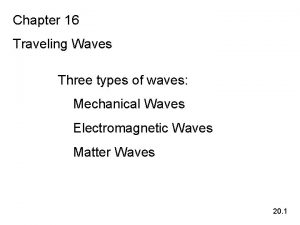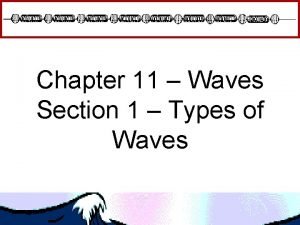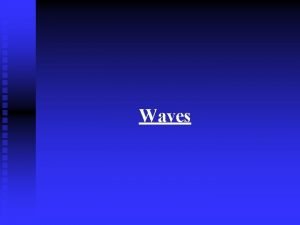Chapter 14 1 Waves Types of Waves Waves


























- Slides: 26

Chapter 14 -1 Waves Types of Waves

Waves: n A repeating disturbance in a solid liquid or gas




Waves and Matter n n n Waves don’t carry the water along with them. Only the energy carried by the waves moves forward. Waves - Carry energy without transporting matter


Mechanical Waves n Mechanical Waves – Require a medium (Solid, liquid, and gas)

Electromagnetic Waves n n n Electromagnetic Waves – Light Waves – Do not require a medium

Types of Waves: n Transverse Waves – Particles of the medium move perpendicular to the direction the wave is moving n n Up and down Light Waves



Longitudinal Waves n Waves where the particles of the medium vibrate parallel to the direction the wave is traveling. n n Slinky Sound Waves



Sound Waves n n n Sound waves are longitudinal waves. Travel in a spherical motion Can travel through a medium

Seismic Waves n The breaking crust vibrates, creating seismic waves that carry energy outward.

Seismic Waves n Seismic Waves – transverse and longitudinal

Surface Waves: n Water Waves n n n Occur at the boundary between two mediums Move both parallel and perpendicular Particles move in a circle

Characteristics of Waves: n Sine Curves – Transverse Waves n Looks like an “S” laying on its side

Parts of a Wave: n Crest – Top of a wave n Trough – Bottom of Wave n n Amplitude – Height of Wavelength – Length of the wave – Crest to Crest or Trough to Trough n Symbol = λ (Greek letter lambda)

Parts of a Wave: n n Compression – Longitudinal Wave – Particles are crunched together Rarefactions – Longitudinal Waves – Particles are spread out

Parts of a Wave: n Frequency – The number of cycles or vibrations per unit of time. Symbol = f n Measured in Hertz (Hz) n Frequency = _1__ n Period

Wave Speed: n n n Speed = Distance ÷ Time Wave Speed = Wavelength ÷ Period Wave Speed = Frequency x Wavelength V=λ÷T n V = f x λ n

Wave Speed: n Wave speed depends on the medium Waves travel faster in solids n Waves are the slowest in gasses n

Vibrations and Waves: n n Simple Harmonic Motion – Wave or vibration continues to move up and down Damped Harmonic Motion – Wave or vibration fades out as energy is transferred from one object to another.
 Chapter 15 section 1 types of waves answers
Chapter 15 section 1 types of waves answers Do electromagnetic waves require a medium
Do electromagnetic waves require a medium Light is an electromagnetic wave true or false
Light is an electromagnetic wave true or false Example of mechanical waves
Example of mechanical waves Differences between mechanical and electromagnetic waves
Differences between mechanical and electromagnetic waves Characteristics of a longitudinal wave
Characteristics of a longitudinal wave Sound is a longitudinal wave
Sound is a longitudinal wave Short wave vs long wave radiation
Short wave vs long wave radiation Difference between matter waves and electromagnetic waves
Difference between matter waves and electromagnetic waves Electromagnetic waves vs mechanical waves
Electromagnetic waves vs mechanical waves Mechanical and electromagnetic waves similarities
Mechanical and electromagnetic waves similarities Surface waves and body waves
Surface waves and body waves Seismic waves are mechanical waves
Seismic waves are mechanical waves Compare and contrast p waves and s waves using venn diagram
Compare and contrast p waves and s waves using venn diagram Electromagnetic and mechanical waves
Electromagnetic and mechanical waves Constructive waves and destructive waves difference
Constructive waves and destructive waves difference Wave types
Wave types What kind of wave is this
What kind of wave is this Seismic wave types
Seismic wave types Two types of body waves
Two types of body waves Epicenter of earthquake
Epicenter of earthquake Two types of body waves
Two types of body waves Chapter 17 mechanical waves and sound
Chapter 17 mechanical waves and sound Periodic waves
Periodic waves Wave graphic organizer
Wave graphic organizer Types of waves quad clusters answer key
Types of waves quad clusters answer key Vertical wave
Vertical wave
